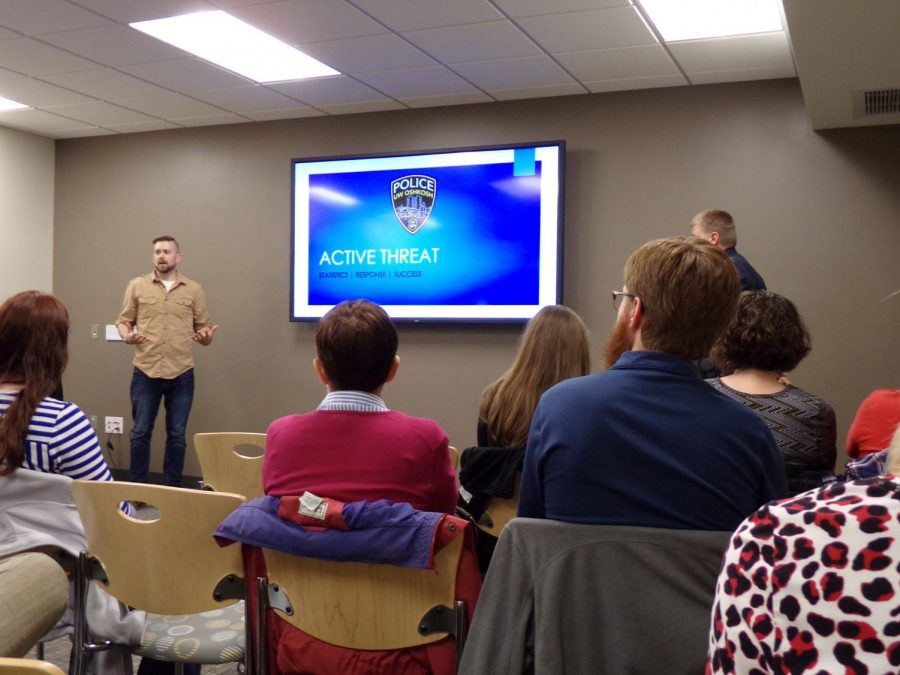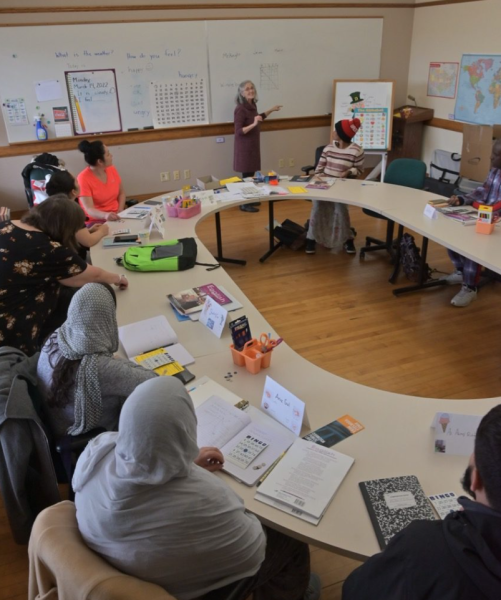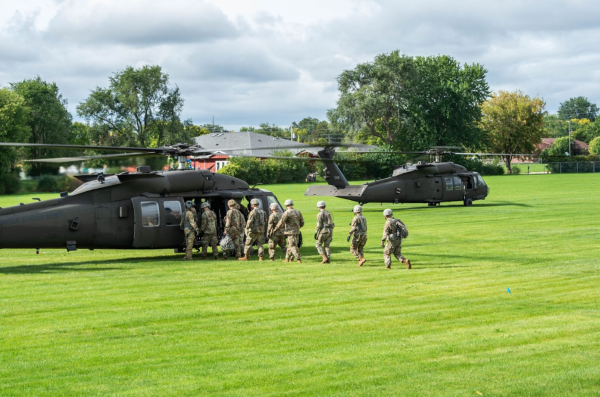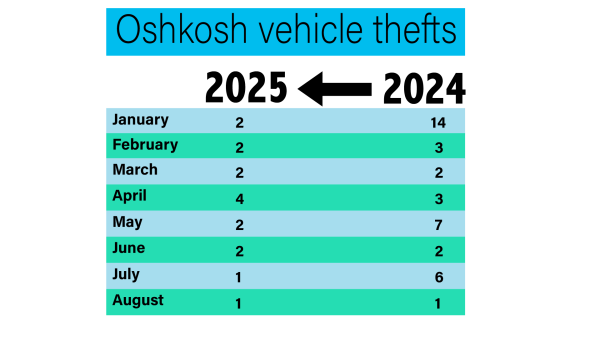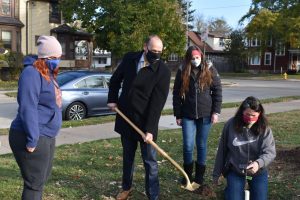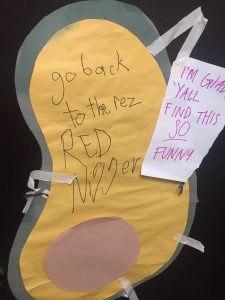Training on campus provides insight for active threats
Geology professor Joseph Peterson and UP Capt. Chris Tarmann explain how to respond to active threat situations, like having an active shooter on campus.
UW Oshkosh held active threat information sessions in Reeve Union 209 on April 12 and 22, where University Police Capt. Chris Tarmann and geology professor Joseph Peterson outlined how to intervene before someone creates an active threat and how to respond during an active shooter situation.
College of Education and Human Services Budget Director Julie Neubert attended the event and said the session was important because it teaches students to be more aware of their surroundings and to be more proactive in looking out for one another.
“I think having an awareness might be a lifelong blessing,” Neubert said, “because it might not happen here at school but maybe out other places in the community.”
The presentation defined an active assailant as an “individual actively engaged in killing or attempting to kill people in a confined and populated area.”
Tarmann said the training emphasizes bystander intervention and gives people struggling with everyday life the resources they need before they become an active assailant.
“What we can do as a small community is care about our people,” Tarmann said. “We can’t ignore people who aren’t functioning in our community.”
Peterson said Tarmann brings the law enforcement perspective to the training while he brings the survivor perspective.
“I was in graduate school at Northern Illinois University in 2008, I was teaching a class and we actually had a mass shooting in my classroom,” Peterson said.
Peterson said he was teaching in a pit lecture when the gunman came in through a door behind him and started firing at the crowd of students. The gunman was carrying a sawed-off shotgun and wore all black with a shirt that had an AK-47 on it and the word “terrorist” across the top.
“My initial thought was, ‘This can’t be real, this has to be some kind of drill’,” Peterson said. “My brain didn’t want to acknowledge what was happening, and then he reloaded.”
Peterson said as students were running out, he jumped off of the stage of the lecture hall, realized he needed to get out of there, waited for the gunman to reload and then made a run for it.
“I kept my eye on him the entire time, and we made eye contact,” Peterson said. “He dropped the shotgun, he reached back behind himself and he pulled out a GLOCK 9 mm and shot me in the shoulder.”
Peterson said after realizing he wasn’t dead, he kept running out of the building and reported the incident immediately. The gunman took his own life minutes later.
“I later found out that it was just my classroom,” Peterson said.
The shooter, who was a former NIU student battling mental illness, had previously attended a class in the exact same lecture hall at the exact same time, Peterson said.
“He chose my classroom because he knew on this day there [would] be about 200 people in that room,” Peterson said.
He said he lost five students that day. Exactly 10 years after the attack, his former students gathered for a memorial service when, during the moment of silence, their phones started buzzing with news alerts that the Stoneman Douglas High School shooting was happening.
“That kind of stuff does get frustrating, and it motivates me to do more of these kinds of presentations,” Peterson said.
Peterson said he doesn’t want anyone to be hypervigilant or paranoid, but if they see something out of place they should report it.
“Maybe it’s a person that just needs a cup of coffee and someone to talk to,” Peterson said. “Bringing back this human connection element, I think, would make a big difference.”
The presentation also emphasized being conscientious of where the entrances and exits are when going to a gathering, Peterson said.
“If you go to a movie theater, how often do we actually notice the exits?” Peterson asked. “You should; it takes two seconds.”
Peterson said humans are creatures of habit that get stuck in routines, making it difficult for us to see things out of the ordinary.
“Every now and then to just kind of look around and if something’s making the spider sense tingle, think about it, do something with that,” Peterson said.
Tarmann and Peterson will be holding another active threat informational training session on April 26 from 3-4 p.m. in Reeve Union 209.


